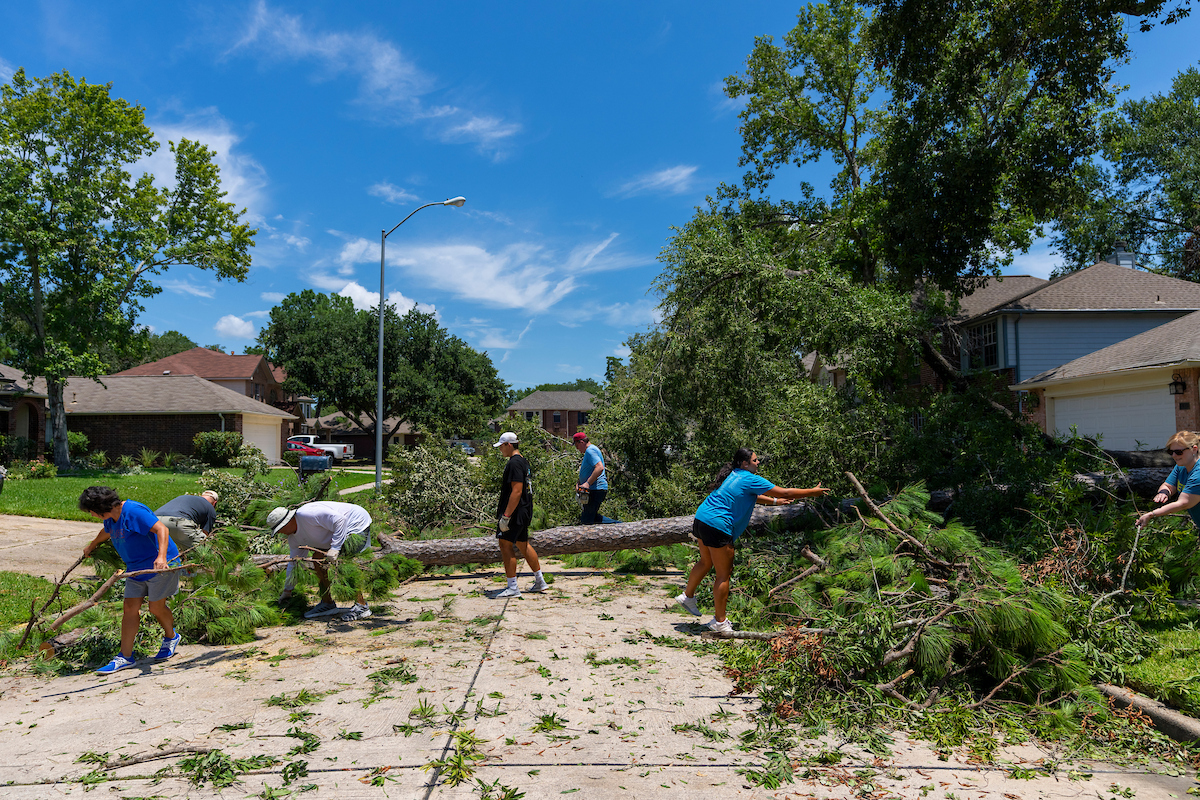Disaster mitigation through green engineering
Exploration Green project helping flood prevention efforts
A wetlands strategy designed to prevent flooding of hundreds of homes in the Clear Lake portion of Houston is touted as a disaster mitigation model to other communities across the country.
The Texas Community Watershed Partners, part of the Texas A&M AgriLife Extension Service Disaster Assessment and Recovery unit, leads the wetland portion of Exploration Green, a five-phase project intended to repurpose an idle golf course into a 200-acre nature park and stormwater detention facility with water detention features and recreational facilities.
Encouraging adoption
Exploration Green is touted by project leaders as a model for other communities looking to remedy potential stormwater and flooding issues in high-population areas.

“The U.S. Environmental Protection Agency is talking to people in Louisiana about how this project can be used as a case study on creating more of these beneficial spaces,” said Charriss York, program director for Texas Community Watershed Partners, TCWP, and AgriLife Extension DAR unit program specialist.
“This project — Exploration Green — is the largest one we’ve ever done,” York said. “We are encouraging others to take on projects like this one.”
Exploration Green has a holding capacity of 500 million gallons of stormwater and serves as a nature preserve and recreation area. This 200-acre urban green space includes 40 acres of both wetlands and permanent detention lakes that are interconnected with with native wetland plants. There are also bee boxes and bat boxes that are maintained by America Eagle scouts.
The project received the 2018 Excellence in Green Infrastructure Award from the EPA and National Association of Flood and Stormwater Management Agencies.
Green infrastructure is a nature-based approach to water management that uses engineered natural solutions in conjunction with gray infrastructure, such as culverts, pipes and detention basins. Practices such as rain gardens, stormwater wetlands and bioswales hold rainwater for a set time, allowing for infiltration and pollutant removal, York said.
“This holding period also decreases the volume of water moving downstream during the storm,” York said. “Water then slowly drains over time, so the system is emptied before the next rainfall.”
Constructed storm wetlands create areas or space for water to flow, which can also feature recreational areas like walking trails. Exploration Green is in Clear Lake, about 1 mile from the Johnson Space Center.
York said work has also been facilitated through the Clear Lake Water Authority. Funding for the project is through a local bond and grants have also made funding possible for the park and benches.
Flood mitigation
The wetlands strategy has helped prevent flooding dating back to Hurricane Harvey.
“Residents saw how effective Phase 1 of the project was after the impact of Hurricane Harvey, and the community overall has been so receptive,” York said. “Originally, this was a 20-year project. After Harvey, everyone naturally asked the water authority to build it faster, and it was completed in less than 10 years.”
Monty Dozier, AgriLife Extension Disaster Assessment and Recovery program director, said “wetland projects like this are an excellent example of using natural practices to mitigate flooding.”
The Disaster Assessment and Recovery work with this project is in line with the “Keeping Texas Prepared” initiative, part of The Texas A&M University System.
York said the golf course was built in the 1960s and housing around the venue was in high demand as the space center was being developed. However, with that growth came more concrete, which led to more water runoff.
York said Exploration Green has helped protect more than 16,000 homes and businesses, which serve 30,000 people.
Other projects by TCWP are currently in the works in both Houston and Galveston.
“With Exploration Green, it started construction in 2017,” York said. “When Phase I was almost 8% complete, Hurricane Harvey hit and the work that had already been done on the project helped prevent several houses and businesses from being flooded. Since then, we’ve completed an additional four phases as part of the project.”
York said her team routinely provides continued engagement with community partners to provide updates on projects, community activities and just to help citizens stay informed on what’s going on related to storm activity and environmental issues.





